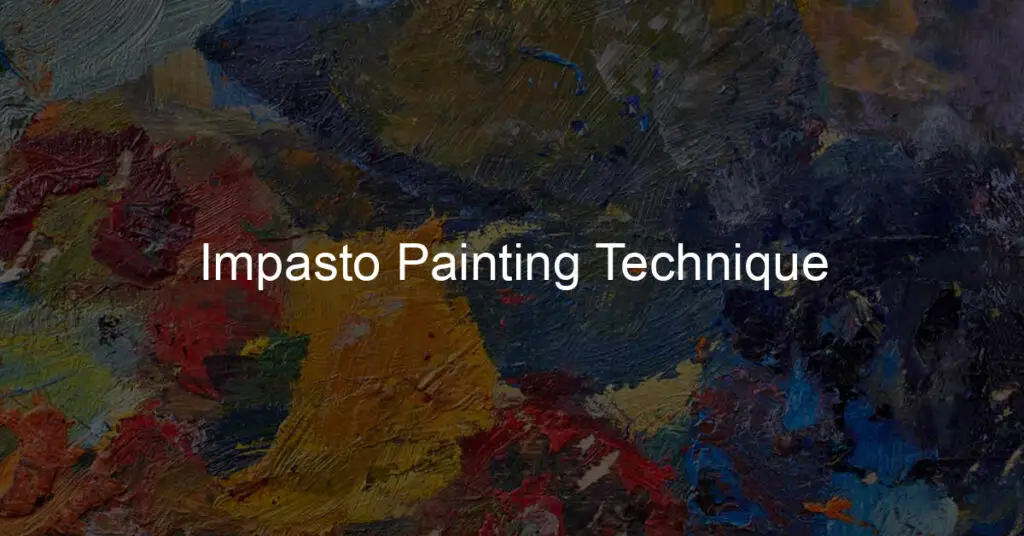Impasto painting technique has been an essential component of the artist’s toolbox for centuries. This approach involves applying thick layers of paint onto the canvas, often with a palette knife or a brush, to create a three-dimensional texture.
By doing so, artists can add depth and dimension to their work, enhancing the visual appeal of their pieces.
The impasto technique dates back to the Renaissance period, with prominent artists like Rembrandt and Titian utilizing it in their masterpieces.
In more recent times, artists such as Vincent van Gogh and Jackson Pollock have also encapsulated the vitality of impasto strokes in their work. This versatile technique can be employed in a variety of mediums, including oil, acrylic, and even watercolor, allowing artists to experiment and develop their unique style.
Using impasto enhances the tactile quality of a painting, engaging the viewer’s senses and drawing them into the piece.
The method can also help to create a sense of movement and energy within the composition. With the right application and understanding, the impasto painting technique can elevate the artist’s work to new creative heights.
Materials and Tools
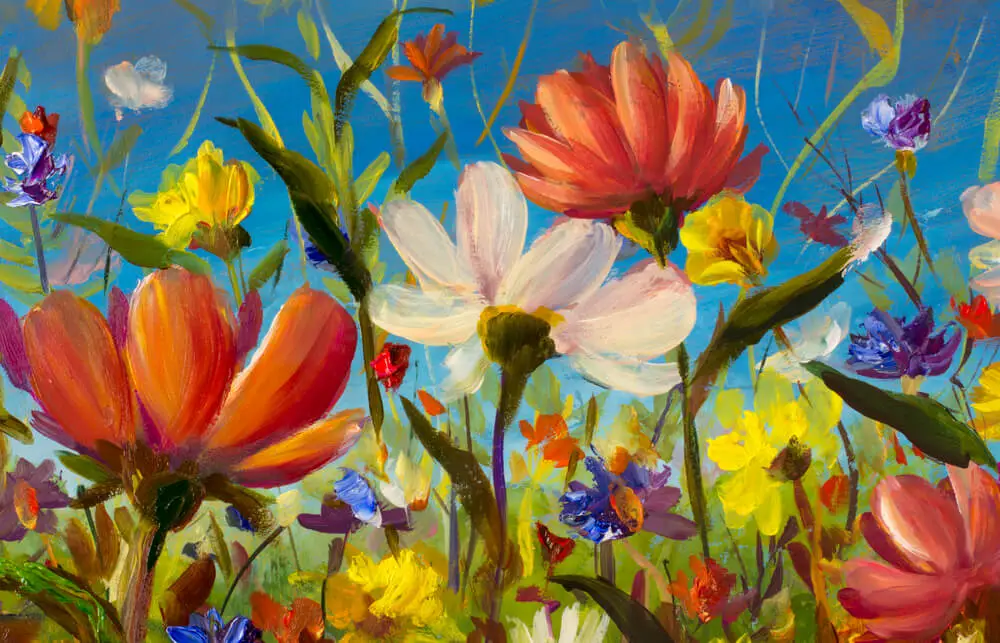
The impasto painting technique involves applying thick layers of paint to create texture and depth in a painting. To achieve this effect, you’ll need the right materials and tools. Here is a list of the essential items you’ll need:
Paints: Various types of paint can be used for impasto, but the most common are oil and acrylic paints. These mediums are thick, allow for easy layering, and have a long drying time, making them suitable for this technique.
- Oil paint: Oil paint is a popular choice for impasto due to its rich color, consistent texture, and slow-drying nature. This allows artists to work on a painting over an extended period and make adjustments as needed.
- Acrylic paint: Acrylic paint is another viable option, offering faster drying times and easy clean-up. To achieve impasto effects, artists can use heavy-body acrylics or add a thickening agent to create the desired texture.
- Watercolor and tempera: Although less commonly used for impasto, watercolor and tempera can be employed for this technique. However, their handling and results will be different from oil and acrylic paints.
Brushes and Palette Knives: Impasto requires the use of specific tools to manipulate the paint and create texture on the canvas:
- Palette knife: A palette knife is a must-have tool for impasto, as it helps to apply thick layers of paint and create different textures. Artists can choose from various shapes and sizes to achieve their desired effects.
- Brushes: Although not as commonly used as palette knives, brushes with thick bristles can also be employed to create brush strokes and textural elements.
Additives and Varnishes: Artists may choose to use additional materials such as wax or varnish to modify the paint’s texture or protect the finished piece:
- Wax: Adding wax to your paint can create a thicker consistency, making it suitable for impasto techniques. It also enhances the finish by providing a subtle sheen and added protection.
- Varnish: Applying varnish to your completed Impasto painting can help to protect the work from environmental factors and enhance its longevity. Be sure to wait until the paint is completely dry before applying varnish, as this can take several months for oil paintings.
Famous Impasto Artists and Artworks
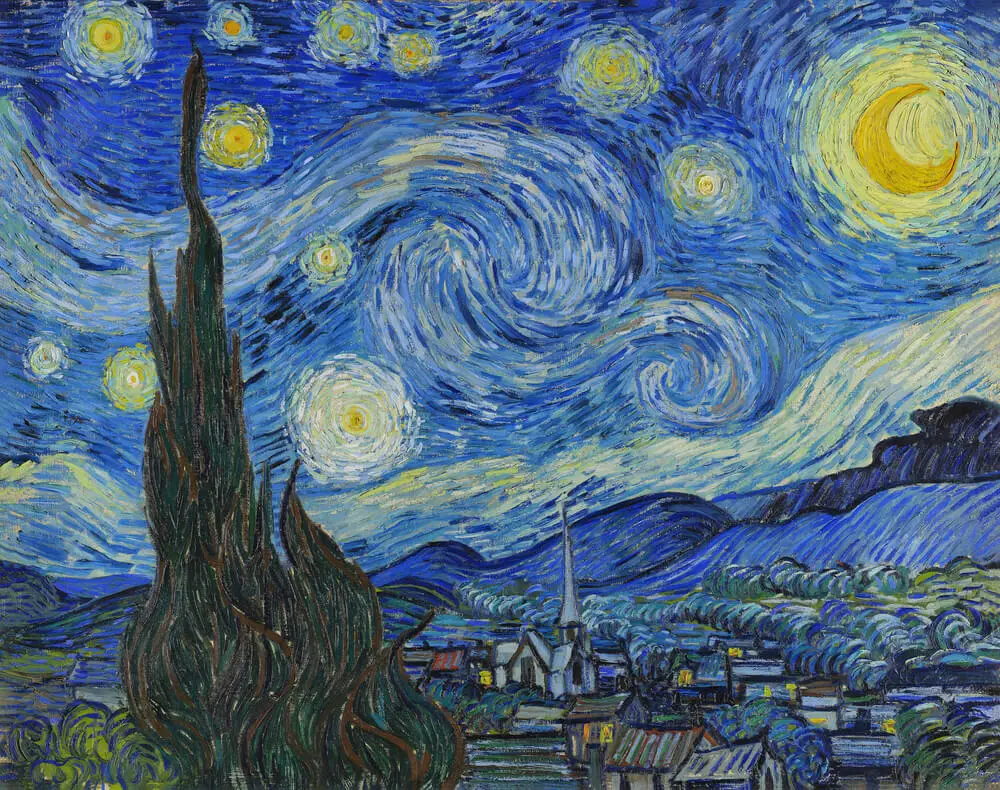
Vincent van Gogh is one of the most renowned artists known for using the impasto technique in his paintings. Some of his most famous impasto works include Starry Night and Wheat Field with Cypresses. Van Gogh’s impasto style allowed him to convey texture, depth, and emotion through thick layers of paint, making his artworks stand out in the art world.
Another famous impasto artist is Rembrandt van Rijn, a painter known for his mastery in creating depth and texture. By using this technique, he was able to portray the detail of fabrics and skin, as well as light and shadow, in his paintings. The deliberate application of paint in his work allowed viewers to appreciate the subject matter on a more intimate level.
Jackson Pollock, an American painter and a significant figure in the abstract expressionist movement, also employed impasto in some of his works. While famous for his drip paintings, Pollock’s impasto creation added an extra layer to his abstract art, producing a sense of raw energy.
Claude Monet, a key founder of French Impressionism, used impasto to capture moments in time, often focusing on the beauty of nature. His use of texture and color reflected the changing light and seasons in his landscapes, such as those found in his series of Water Lilies paintings.
The expressionists also embraced the impasto technique, as it allowed them to break from traditional methods and convey more emotion and movement in their artwork. Frank Auerbach is a prime example of an expressionist who relied on impasto to create his powerful, emotional pieces. His distinctive works, consisting of thickly applied paint creating an almost sculptural effect, capture the essence and atmosphere of his surroundings.
In summary, impasto painting has been used by many famous artists throughout history to create impact and convey emotion. From Van Gogh’s vivid colors to Monet’s atmospheric scenes, this technique has been central to the creation of some of the world’s most iconic artworks.
Impasto Technique Basics
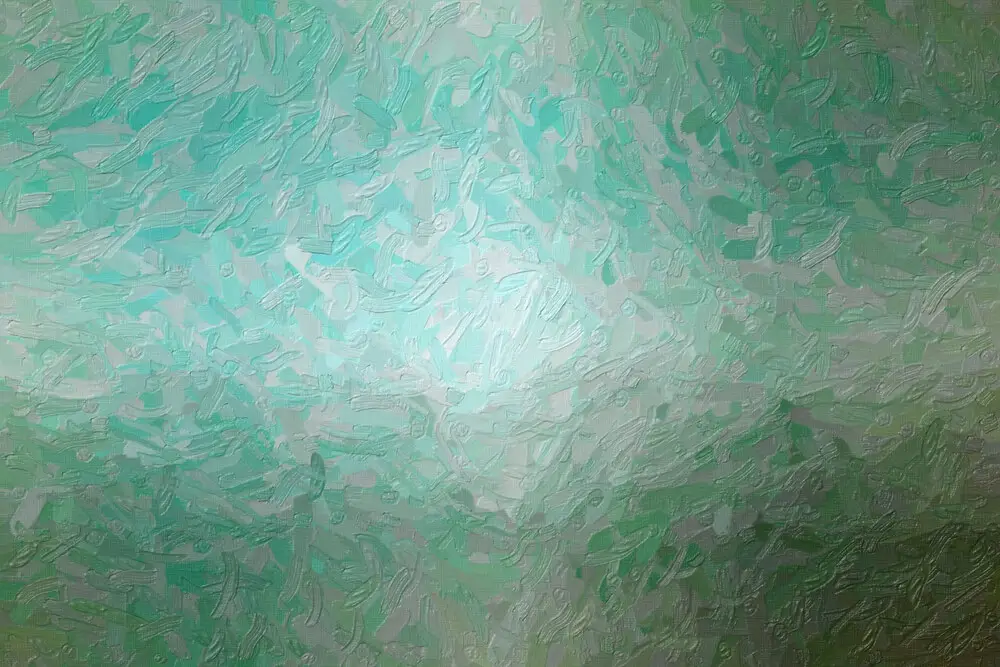
Impasto is a painting technique where paint is thickly applied on the canvas, creating visible brushstrokes and texture.
This method adds depth to the artwork by emphasizing the play of light and shadows resulting from the raised surfaces. It allows artists to experiment with the tactile quality of paint, creating a sense of movement and dimension in their compositions.
To achieve the impasto effect, artists often use a thickly textured mixture of paint and additives like cold wax, gel, or impasto medium. Depending on the desired thickness, painters can adjust the ratios to create the perfect consistency.
The application can be made using brushes, palette knives, or other tools, allowing artists to express their individual styles.
One of the key aspects of impasto is the careful manipulation of lighting and shadows. The raised areas of thick paint catch more light, while the recessed areas create natural shadows. This interplay of light and shadow enhances the overall depth and dimension within the painting. The outcome is a dynamic work of art that invites viewers to explore the surface.
In summary, impasto is a versatile painting technique that focuses on texture, depth, and the play of light to create captivating works of art. Its unique qualities allow artists to experiment with various tools and materials while showcasing their distinct styles.
Subject Matter
The Impasto painting technique is versatile and can be applied to a variety of subject matters. This technique adds depth and dimension to the artwork, capturing the viewer’s attention. Artists often use impasto to emphasize certain aspects of their subject, creating a sense of movement, expression, and texture within the piece.
Face and expression play a significant role in Impasto painting, as artists can focus on the features and emotions portrayed by the subject. By applying thick layers of paint to the face, they emphasize expressions, bringing life and intensity to their subject.
This technique allows the artists to showcase the unique characteristics and personality of their subject, making the artwork more engaging and relatable.
Portraits are well-suited for the impasto technique, as it can evoke a sense of intimacy and connection between the subject and viewer.
The three-dimensional aspect of impasto adds a tactile quality to the portrait, making it more inviting and intriguing. The added texture generated by this technique can also enhance the facial form, while the heavy brushstrokes can help convey the mood or the spirit of the person being depicted in the painting.
Landscapes are another popular subject matter for Impasto painting. The technique can be used to capture the essence of natural elements, such as trees, mountains, and water.
By using thick layers of paint, artists can bring these elements to life, creating an atmospheric and engaging scene. Additionally, the movement created by Impasto can add dynamism and energy to the landscape, making it feel more alive and fluid.
In summary, the Impasto painting technique can be effectively utilized in depicting various subject matters, ranging from faces and expressions to landscapes and portraits. Its unique ability to emphasize movement, depth, texture, and emotion enables artists to create captivating and visually striking artwork.
Impasto in Different Mediums
Impasto is a versatile painting technique that can be applied across various mediums. The technique involves applying thick, textured layers of paint on the canvas, resulting in pieces that can be visually striking and bold.
Oil painting is one of the most popular mediums for impasto due to its slow drying time and malleability. Artists have the flexibility to create complex textures and manipulate the paint in a way that is almost sculptural. Vincent van Gogh and Rembrandt are renowned for their use of impasto in oil paintings.
Acrylic painting is another medium well suited for impasto. With a quicker drying time than oil paints, acrylics allow artists to build up layers and create textured surfaces.
However, it may require more planning, as the fast-drying nature can be both a boon and a limitation. Varying the thickness of the paint and using mediums can help achieve the desired level of texture.
Watercolor is a less common medium for impasto, but it is not impossible. To create a textured effect with watercolors, it is essential to use heavy body watercolors that provide more pigment and thickness. Additionally, artists can experiment with tools such as sponges, knives, or brushes to build up the paint surface.
Tempera paints can be used for impasto as well, though it may be difficult to achieve the desired thickness and texture due to its fast drying and matte quality.
One solution is to mix tempera paint with a medium that allows it to become thicker, making it more malleable for impasto techniques.
Pastels may not seem like a logical choice for impasto, but artists can create texture using oil or soft pastels. By layering and blending pastels, textures can be created on the surface of the paper or canvas, mimicking the effect of impasto.
Abstract paintings often benefit from the use of impasto, as it allows for expressive manipulation of paint and texture, providing visual depth and movement. Artists can combine impasto with various mediums mentioned above to create pieces that celebrate the interplay between color and texture.
In conclusion, impasto offers artists the opportunity to experiment with texture and create captivating pieces across various mediums. Whether it’s oil painting, acrylics, or even pastels, the impasto method promises an engaging and textured experience for both artists and viewers.
Impasto Painting Styles
Impasto painting is a technique that involves applying thick layers of paint to create texture and depth in a piece. The term “impasto” is derived from the Italian word “pasta,” meaning paste, owing to the heavy, thick consistency of the paint. There are various styles within the impasto technique, adopted by diverse movements and artists throughout history.
Expressionists utilized impasto to convey intense emotions through their works. They often employed heavy, bold brushstrokes to emphasize the physicality of the painting process, eliciting a sense of urgency and movement. This can be seen in the works of Vincent van Gogh, whose energetic and expressive brushwork evoked powerful feelings and moods.
Impressionists were also known to use impasto techniques to capture the fleeting effects of light and atmosphere. These painters, such as Claude Monet and Pierre-Auguste Renoir, typically worked outdoors, or “en plein air,” rapidly applying thick layers of paint to their canvases. Impasto allowed them to create a tactile, three-dimensional quality in their artwork that emphasized their distinctive brushstrokes.
Conversely, abstract expressionists like Willem de Kooning combined impasto with gestural brushwork to create large-scale, non-representational paintings. These artists sought to express their inner emotions and the energy of the creative process through the physicality of their paint application. Their bolder strokes and thick paint layers produced a sense of spontaneity and dynamism in their compositions.
In summary, impasto painting has been embraced by various art movements and artists throughout history, being effectively applied in a range of styles. Whether to emphasize emotions, capture the play of light and atmosphere, or express pure artistic energy, the impasto technique has long been a powerful tool in the art world. Its versatility and the ability to create a tangible, textured surface have made it a favorite among expressionists, impressionists, and abstract expressionists alike.
Impasto Technique in Depth
Impasto is a painting technique that involves applying thick layers of paint directly onto the canvas, creating a sense of depth and dimension. This method often uses a paste-like consistency of paint to create prominent brush strokes and texture, which adds a sculptural effect to the artwork.
One of the key aspects of impasto is layering. The artist applies multiple layers of paint, one on top of the other, to build depth and volume. This creates a visual sense of space and can create a three-dimensional feel on a flat surface. The thickness of the layers also adds an element of intensity and energy to the artwork, as it contrasts with thinner, more delicate applications of paint.
Palette knives are essential tools in impasto painting, as they allow for precise control over the application of the paint. The artist uses the edge and flat side of the knife to spread, smooth, and blend the paint on the canvas. It also helps in achieving the desired texture, be it a rough or smooth finish.
The Impasto technique is known for its energy and intensity. The heavy, bold strokes of paint evoke a sense of movement and activity, capturing the viewer’s attention. This technique is particularly effective in conveying emotions and atmosphere within a painting. For example, the use of thick, tumultuous layers can depict a stormy scene, while a smoother application of paint can create a serene atmosphere.
In conclusion, the impasto technique offers a unique approach to painting, characterized by its layering, use of paste-like paint, and attention to space and volume. By utilizing palette knives and other tools, artists can achieve a wide range of effects, from sculptural to atmospheric, all while maintaining a confident, knowledgeable, neutral, and clear tone in their work.
Tips and Best Practices
When exploring the Impasto Painting Technique, there are some essential tips and best practices to follow. This method of painting, often associated with the Expressionist Movement and famous artists like Van Gogh, is characterized by applying thick layers of paint onto the canvas, creating textured and vivid artworks.
To achieve this effect with acrylics, remember to use a heavy body acrylic paint. These thick, highly pigmented paints will hold brushstrokes and palette knife impressions, staying true to the impasto style. It is also helpful to choose brushes with stiff bristles, which will be more effective in moving the dense paint around your canvas.
Experiment with various applications of paint, such as using a palette knife or even your fingers to apply the paint to the canvas. This allows for a more tactile experience and evokes greater emotion in your work, a staple of the Expressionist Movement.
While the Renaissance wasn’t known for the Impasto technique, it’s important to understand color theory and composition, two elements that were crucial in shaping art during this period. Use a mix of cool and warm colors to create a balance in your painting and consider following the rule of thirds for composition.
To better understand this technique and its history, consult various sources, such as art dictionaries, which will help define specific terminology and provide context for the development of the Impasto method.
By following these tips and best practices, you’ll be well on your way to creating your own Impasto-style paintings immersed in texture and emotion.
Frequently Asked Questions
How do you begin an Impasto painting?
To begin an impasto painting, first, prepare your canvas by applying a layer of gesso to prevent the paint from soaking into the fibers. Then, sketch out your composition lightly with a pencil or charcoal. Mix your desired paint colors with a palette knife, making sure to retain a thick consistency. Apply the paint to the canvas using a brush or palette knife, building up texture and dimension by layering the paint in thick strokes.
What type of paint is used for impasto?
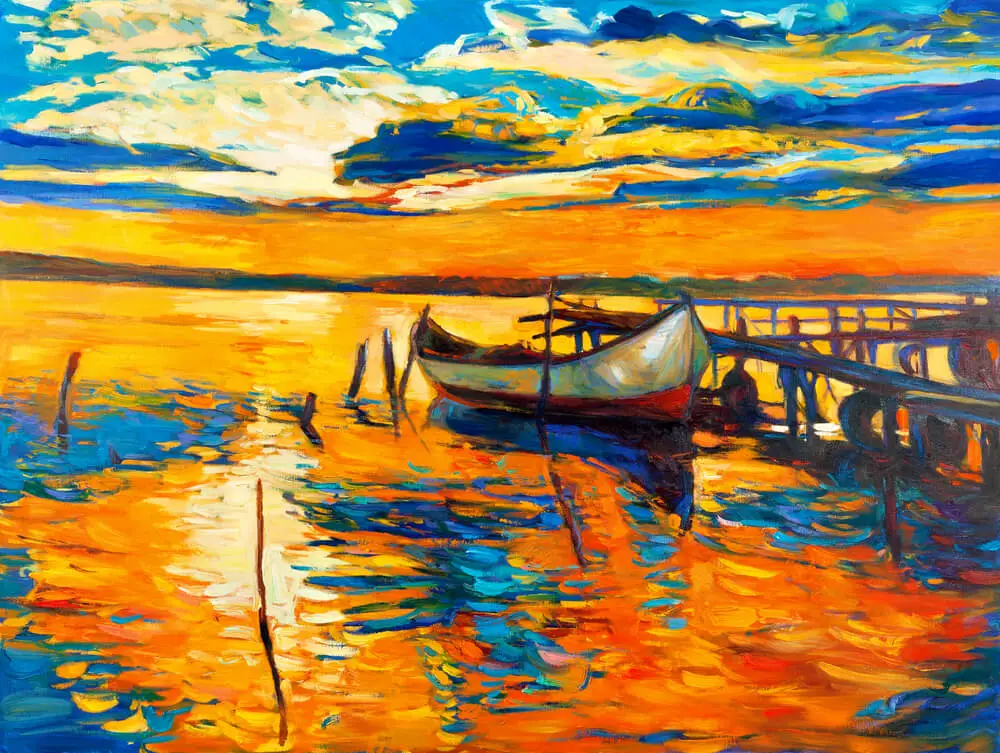
Oil paint is the most commonly used medium for impasto due to its thick consistency and slow drying time, which allows artists to manipulate the texture and build up layers. However, acrylic paint can also be used for impasto with the help of certain additives and techniques.
What techniques are common in impasto art?
Common techniques in impasto art include using a palette knife or brush to apply thick layers of paint, as well as experimenting with different tools, such as painting knives, trowels, or even fingers, to create unique textures and effects. Layering colors directly on the canvas and allowing them to mix organically can produce interesting and vibrant results.
How can acrylic paint be thickened for impasto?
To thicken acrylic paint for impasto, mix in an acrylic medium, such as modeling paste or heavy gel medium. These products increase the thickness and viscosity of the paint without compromising its color or drying time. Another option is to use high-viscosity acrylic paint designed specifically for impasto techniques.
Which materials are needed for impasto painting?
The essential materials for Impasto painting include a canvas, gesso, paint (oil or acrylic), and painting tools like brushes, palette knives, and painting knives. Additionally, acrylic mediums or high-viscosity acrylic paint may be needed for thickening acrylic paint, and a palette or mixing surface is necessary for blending colors.
Who are some well-known Impasto artists?
Some well-known impasto artists include Vincent van Gogh, whose heavily textured brushstrokes are one of his signature techniques, and Frank Auerbach, who is known for his thickly layered impasto style. Other artists famous for using impasto techniques are Willem de Kooning, Lucian Freud, and Anselm Kiefer.

